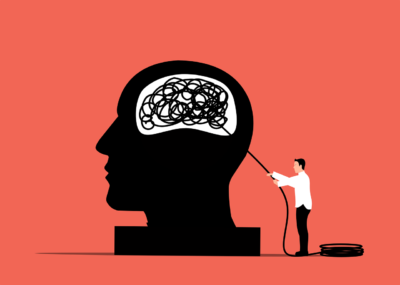February 19, 2024
Understanding and nurturing your self-esteem is like unlocking the key to your mental well-being. It’s the internal barometer that measures how much you value yourself, influencing the way you navigate life’s twists and turns.
Self-esteem encompasses a person’s beliefs, emotions, and attitudes towards themselves, influencing their thoughts and behaviours.
High self-esteem involves a positive self-perception, confidence, and a sense of personal competence, fostering resilience in the face of challenges. Conversely, low self-esteem manifests as self-doubt, insecurity, and a diminished sense of self-worth. It plays a crucial role in shaping individuals’ mental and emotional well-being, impacting relationships, decision-making, and overall life satisfaction. Developing a healthy self-esteem involves recognising and challenging negative self-perceptions, embracing strengths, and fostering a positive self-image.
 This article explores practical insights and guidance inspired by Dr. Paul Gilbert, a pioneer in the field of compassion-focused therapy, to support individuals on their journey towards self-compassion and increased self-worth.
This article explores practical insights and guidance inspired by Dr. Paul Gilbert, a pioneer in the field of compassion-focused therapy, to support individuals on their journey towards self-compassion and increased self-worth.
Understanding the Impact of Early Childhood on Self-esteem
Low self-esteem can often find its roots in unresolved childhood issues. Adverse experiences during formative years, such as trauma, neglect, or a lack of positive affirmation, can significantly impact one’s self-perception.

Dr. Gilbert emphasises the crucial connection between early life experiences and the development of one’s self-perception. Individuals who faced adversity during childhood may internalise negative beliefs about themselves, fostering a pervasive sense of unworthiness. Recognising the impact of these experiences is the first step toward cultivating self-compassion.
Reflection on Early Experiences:
- How have your own experiences shaped their self-perception?
- What negative beliefs have you internalised, and how do these beliefs manifest in your daily lives?
Recognising the Inner Critic:
Dr. Gilbert introduces the concept of the “inner critic,” an internalised voice that reinforces negative self-talk.
What messages does your “inner-critic” convey and how do these messages contribute to feelings of low self-esteem? Take some time to record this in a journal.
Cultivating Self-Compassion
Dr. Gilbert’s ‘Compassionate Mind Model’ provides a framework for understanding and developing self-compassion. This model involves the interplay of three systems: the threat system, the drive system, and the soothing system.

The Threat System is rooted in evolutionary biology and serves as a survival mechanism. It is activated in response to perceived threats, whether they are physical, emotional, or social. When triggered by a real or imagined threat of some kind, this “threat system” initiates the “fight, flight, or freeze” response, preparing the individual to confront or escape potential danger.
Individuals with a heightened Threat System may be prone to self-criticism and negative self-talk. Childhood experiences, especially those involving trauma or neglect, can sensitise this system, leading to persistent feelings of inadequacy and danger.
The Drive System is motivated by the pursuit of goals, desires, and achievements. It is associated with the activation of the brain’s reward mechanisms, encouraging individuals to engage in behaviours that lead to success, recognition, and satisfaction.
While the Drive System is essential for setting and achieving goals, an imbalance can contribute to low self-esteem if success becomes the sole measure of self-worth. Constant comparison with others, fear of failure, and relentless self-criticism may characterise an overactive Drive System.
Focusing on the soothing system can be particularly transformative when self-esteem is low.
Embracing Self-Compassion
Individuals with unresolved childhood issues may struggle with self-compassion, as they may have internalised negative messages from the past. Recognise that everyone makes mistakes and faces setbacks, and treat yourself with the kindness and understanding you would offer to a friend. Embracing self-compassion becomes a powerful tool in breaking the cycle of negative self-talk rooted in unresolved childhood issues.
If you continue to believe harshly about yourself, no changes will take place. Begin to consider some more positive aspects about yourself and build upon these attributes.
Setting Realistic Goals:
Unresolved childhood issues may manifest as a deep-seated fear of failure or an ingrained sense of inadequacy. Setting realistic goals becomes even more crucial in such cases. Begin with small, achievable milestones and gradually work your
 way up, allowing each accomplishment to dismantle the negative narratives rooted in childhood experiences. Celebrate every success, using them as stepping stones toward greater self-assurance.
way up, allowing each accomplishment to dismantle the negative narratives rooted in childhood experiences. Celebrate every success, using them as stepping stones toward greater self-assurance.
The Power of Positive Affirmations:
Challenging the negative beliefs ingrained during childhood requires intentional effort. Positive affirmations play a pivotal role in reshaping the mindset influenced by past experiences. Start your day by affirming your worth and capabilities, recognising that the narratives from your past do not define your present or future. Consistent use of affirmations can aid in rewiring your brain to focus on positive aspects and counteract lingering self-doubt.
Mindful Self-Compassion:
Dr. Paul Gilbert advocates for the integration of mindfulness into the practice of self-compassion. Mindfulness allows individuals to observe their thoughts and feelings without judgment.
Continuous Learning:
Unresolved childhood issues may have left gaps in certain skills or coping mechanisms.
 Continuous learning becomes not just a practice of acquiring new skills, but also a process of self-discovery and healing.
Continuous learning becomes not just a practice of acquiring new skills, but also a process of self-discovery and healing.
Engage in activities that nurture your interests and allow you to explore aspects of yourself that may have been stifled in the past.
Nurturing Positive Relationships:
Creating a supportive network becomes even more crucial when dealing with unresolved childhood issues. Surround yourself with individuals who understand and appreciate your journey. Positive relationships can counteract the impact of past negative experiences and contribute significantly to building self-esteem. Seek connections that foster growth, understanding, and encouragement.
Prioritising Physical Well-being:
The connection between physical and mental well-being becomes even more evident when addressing unresolved childhood issues.

Regular exercise, a balanced diet, and adequate sleep contribute to overall vitality and a positive self-image. Incorporate activities that bring joy and comfort, fostering a sense of well-being and resilience.
Professional Support:
Dealing with unresolved childhood issues often requires specialised support. Seeking the help of therapists or counsellors trained in trauma and childhood development can be instrumental in navigating complex emotions. A therapist will provide guidance in developing strategies for building self-confidence while addressing the specific challenges stemming from unresolved childhood issues.

If you would like to contact Claire to work on some of these issues, you can contact her here.
Rebuilding self-esteem is a journey that demands patience, self-reflection, and dedication. By acknowledging and addressing unresolved childhood issues, incorporating positive affirmations, setting realistic goals, embracing self-compassion and seeking professional support when necessary, individuals can embark on a transformative journey toward greater confidence and self-discovery.
Book References:
- “The Compassionate Mind: A New Approach to Life’s Challenges” by Paul Gilbert
- “Mindful Compassion: How the Science of Compassion Can Help You Understand Your Emotions, Live in the Present, and Connect Deeply with Others” by Paul Gilbert and Choden
- “Overcoming Depression: A self- help guide using Cognitive Behavioral Techniques” by Paul Gilbert
